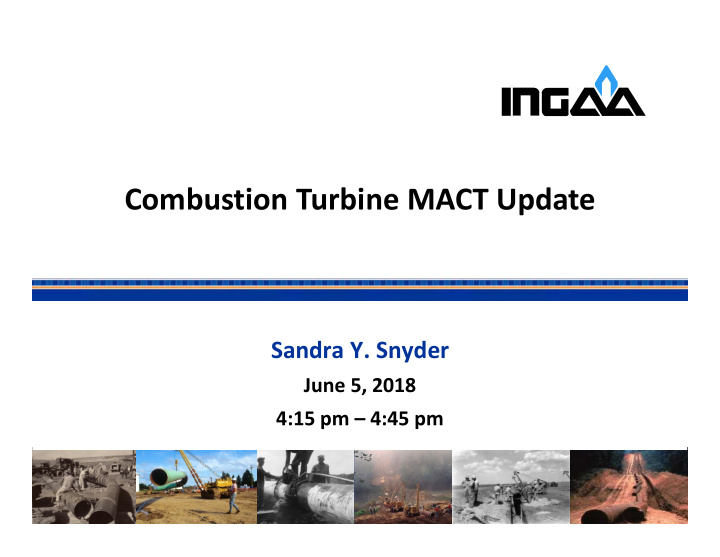



Combustion Turbine MACT Update Sandra Y. Snyder June 5, 2018 4:15 pm – 4:45 pm
Turbine NESHAP 40 C.F.R. 63, Subpart YYYY • Turbine NESHAP Final Rule Proposed rule: – 68 Fed. Reg. 1,888 (Jan. 14, 2003) – “New” if reconstructed on or after Jan. 14, 2003 Final rule & effective date: – 69 Fed. Reg. 10,513 (Mar. 5, 2004)
Turbine NESHAP 40 C.F.R. 63, Subpart YYYY • Final rule - formaldehyde emission standard 91 ppbvd @ 15%O2 for new / reconstructed turbines located at a major source of HAP emissions Affected units are ≥ 1 MW at ISO conditions
Rule Stay / De-listing Status • De-listing petition filed • EPA proposed to delist 4 subcategories • Rule stayed for Gas-Fired Turbines on Aug. 18, 2004 • But pursuant to the Plywood NESHAP case, source categories (e.g., turbines) can be delisted, but not subcategories (e.g., natural gas-fired turbines) • De-listing request for gas-fired turbine subcategories will likely be denied and stay rescinded
Residual Risk & Technology Review (RTR) • Rulemaking schedule set by lawsuit re: failure to conduct 8-year RTR for 20 source categories (including turbines) • EPA outreach to stakeholders re: RTR Mar. 2018 - INGAA submitted comments (e.g., new technology or add-on controls, catalyst costs, formaldehyde measurement) Apr. 2018 – EPA outreach to INGAA and others May 2018 – INGAA provided additional feedback to EPA
Response to April EPA Inquiry • Concerns with EPA’s data: Some turbines have modeled risk above acceptable thresholds 1 compressor station in LA with inhalation risk above 1 in a million – Emission rate – Stack exit velocity – Exhaust temperature Arsenic above screening value – 17 liquid-fired units
Additional Concerns • Future considerations: Standards for existing units, smaller units, etc. Startup requirements or a “work practice” approach similar to RICE NESHAP? EPA may allow 2 years or more to comply
Questions?
Recommend
More recommend